Campbell-Hicks House
Introduction
Text-to-speech Audio
Images
Charles W. Campbell, unknown date
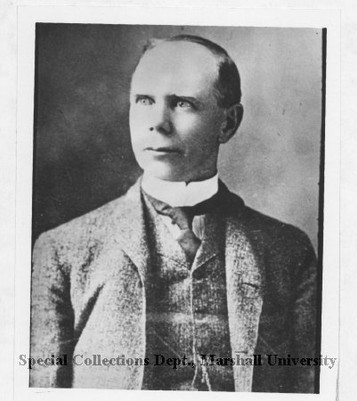
Charles W. Campbell, unknown date
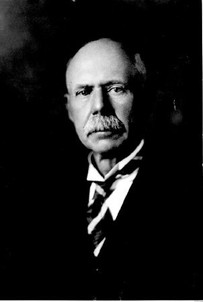
The Campbell-Hicks House sits at the northeast corner of 5th Avenue and 11th Street
.jpg)
View, focusing on the narrow turret of the Campbell-Hicks House
.jpg)
The Ionic columns holding up the house's front porch make it an example of the Free Classic subtype of the Queen Anne style
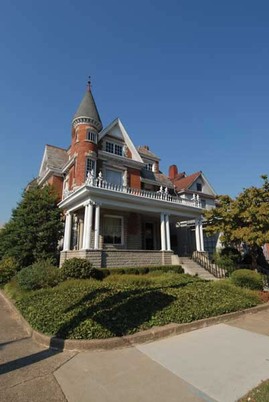
View of the house from 11th Street
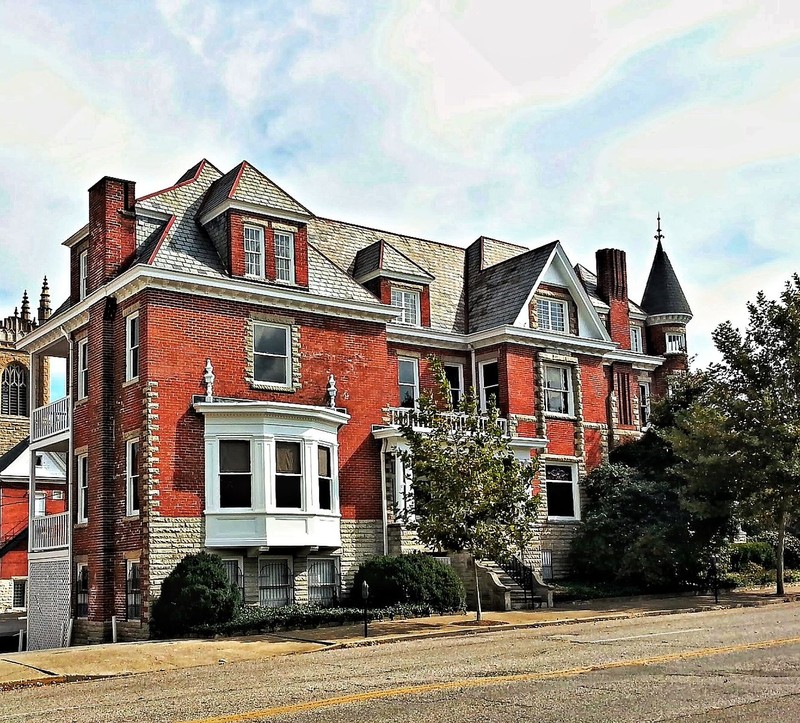
The house, pictured in 2006 as part of the Downtown Huntington Historic District

The Campbell-Hicks House, pictured in 1985
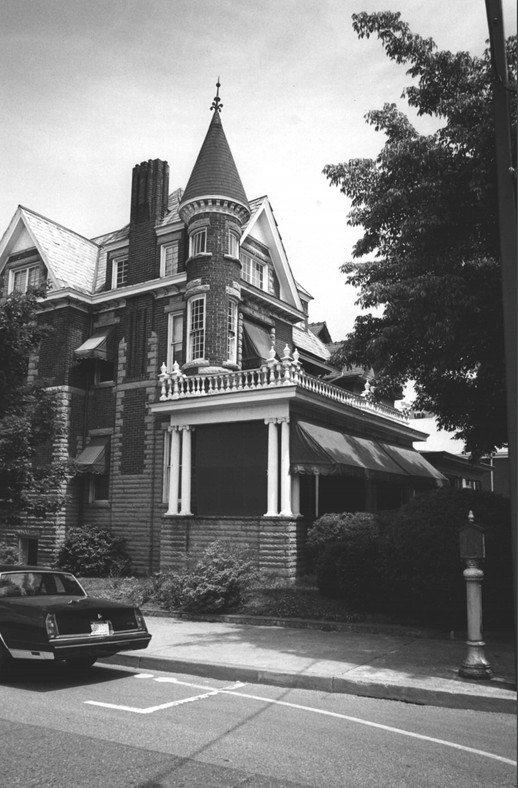
Backstory and Context
Text-to-speech Audio
Charles William Campbell was born in Monroe County, Virginia (now West Virginia) in 1856. After working as a schoolteacher for a brief time, Campbell moved to Lincoln County in 1880, where he studied law and was admitted to the bar the following year. He practiced in Hamlin for the next four years, serving as Commissioner in Chancery of the Lincoln County Court before becoming Assistant Prosecuting Attorney for neighboring Cabell County in 1885. Campbell served in this position until 1889, when he became a legal associate of John H. Halt. By that time, Campbell had moved to Huntington and married Jennie Ratliff of Wayne, WV, with whom he had five children. In Huntington, Campbell became heavily involved in local politics. He served several terms on the Huntington City Council, and was elected president of the West Virginia Bar in 1908. He also served on the state House of Delegates for the 1911-13 term, during which he was chairman of the House Judiciary Committee. In 1919, Campbell was elected mayor of Huntington, a position he held until 1922. As mayor, Campbell was notable for donating his salary towards the development of Huntington’s park system. When Campbell retired in 1924, he returned to Monroe County, where he passed away in 1935.
Not long after he moved to Huntington, Campbell commissioned the construction of a house on a small corner lot at the intersection of Fifth Avenue and Eleventh Street. Completed in 1896, the dwelling now referred to as the Campbell-Hicks House is an impressive two and one-half story structure in the Queen Anne style. The ornate stone and red brick home features a two-story rounded tower, a front porch upheld by five pairs of Ionic columns, and heavy stone detailing around its windows and entrances. The house once had many stained glass windows, all but one of which have since been removed. These features qualify the Campbell-Hicks House as a prominent local example of the Queen Anne architectural style. During the last two decades of the nineteenth century, Queen Anne emerged as the dominant residential style in the United States. The most eclectic variation of Victorian architecture, Queen Anne homes often feature asymmetric facades and elaborate ornamentation. Notably, the Campbell-Hicks House is an example of the Free Classic subtype of Queen Anne, which incorporated classical design elements like columns alongside the typical Victorian features.
After Campbell returned to Monroe County, the house was sold to Dr. Ira Clay Hicks. Born in Putnam County in 1868, Hicks attended Marshall College and taught school for nine years before entering Baltimore’s College of Physicians and Surgeons in 1895. He went on to establish a successful private practice in Hurricane, West Virginia, and completed post-graduate courses at his alma mater as well as at Johns Hopkins. In 1907, Hicks relocated to Huntington, where he served as Examining Surgeon for the United States Pension Examiners and as surgeon for the Chesapeake and Ohio Railroad Company. Hicks was also involved in local politics, serving as Assessor of Putnam County from 1893 to 1897 and as a West Virginia state senator from 1905 to 1909. While a senator, he was Chairman of the Senate Committee on Medicine and Sanitation.
In 1943, the Campbell-Hicks House passed to Hicks’ daughter, Xilpha Hicks Jones. Hicks himself continued to live in the home until his death in 1948. Born in Hurricane in 1897, Xilpha was married to Emanuel Macon Jones, a Huntington native. She lived in the Campbell-Hicks House until she passed away in 1982. Xilpha willed the property to the First Presbyterian Church of Huntington, who sold it to local businessman Tom Wolf in 1985. That same year, Wolf nominated the dwelling to the National Register of Historic Places (NRHP) and began restoring the home to house his offices. In 2006, the Campbell-Hicks House was included in the Downtown Huntington Historic District, which is also listed on the NRHP. The historic district includes a collection of historic downtown buildings along with several of Huntington’s earliest residences and churches. At the time of the Campbell-Hicks House’s construction in 1896, the homes of Huntington’s wealthiest residents were located in what is now downtown. As the city expanded, commercial buildings replaced most of these early residences, leaving only a few still standing today. As such, the Campbell-Hicks House is unique as one of Huntington’s few remaining and best-preserved Victorian-era homes.
Sources
Callahan, James Morton. History of West Virginia, Old and New. Volume 3. Chicago, IL. The American Historical Society, 1923.
Craven, Jackie. Queen Anne Architecture in the USA, ThoughtCo. July 3rd 2019. Accessed March 27th 2020. https://www.thoughtco.com/queen-anne-architecture-in-the-usa-176003.
Miller, Thomas Condit. West Virginia and Its People. Volume 2. New York, NY. Lewis Historical Publishing Company, 1913.
National Register of Historic Places, Campbell-Hicks House, Huntington, Cabell County, West Virginia, National Register #85001814.
National Register of Historic Places, Downtown Huntington Historic District, Huntington, Cabell County, West Virginia, National Register #07000240.
https://marshall.pastperfectonline.com/photo/69049063-2112-4536-98DA-596855174500
https://marshall.pastperfectonline.com/photo/043F06E9-0D60-43F9-859B-958099917402
https://www.loc.gov/resource/highsm.31750/
https://www.loc.gov/resource/highsm.31754/
https://huntingtonquarterly.com/2018/09/26/issue-64-top-20-architectural-structures/
https://en.wikipedia.org/wiki/File:Campbell-Hicks_House_2012-10-14_15-17-10.jpg
http://www.wvculture.org/shpo/nr/pdf/cabell/07000240.pdf
http://www.wvculture.org/shpo/nr/pdf/cabell/85001814.pdf
